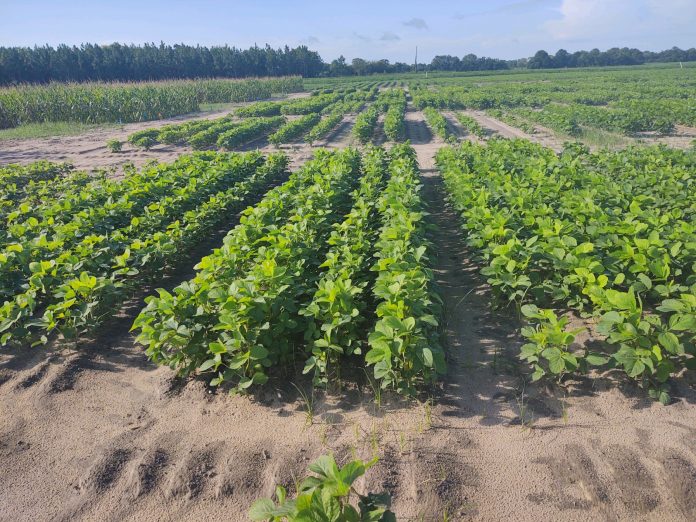AUBURN UNIVERSITY, Ala. – Did you know? Livestock were on the soy diet before it was cool.
While this may seem a bit surprising, soybeans were a popular forage choice for livestock producers in the 1800s. Around World War II, soybean production started to focus primarily on growing the crop for oilseed. At that time, producers began to move away from using soybeans in forage systems. Now, this forage is making a comeback and producers are incorporating the crop into forage systems across the South.
“Soybeans have become a popular addition to food plots, which has resulted in improved forage-type cultivars being released,” said Leanne Dillard, a forage specialist with the Alabama Cooperative Extension System.
Growing the Forage
Growing soybeans as a forage is a little bit different from growing them as a row crop. According to Dillard, producers can plant them like row crop soybeans if they desire a monoculture (grown as a single crop). However, producers often grow forage soybeans as a mixture with other warm-season annual forages.
“The easiest and preferred growing method is to plant them in a mixture with other summer annual grasses,” she said. “Some of these grasses include pearl millet, crabgrass and sorghum-sudangrass.”
By planting mixtures, the animals can select what they need nutritionally. In addition, mixtures allow producers to extend the amount of time the soybeans are available. Forage soybeans are not tolerant of prolonged grazing.
“Our research shows that forage soybeans did not consistently grow back after cutting to a 6-inch stubble height,” Dillard said. “It is likely that heavily-grazed soybeans will not regrow.”
Through their research, the team identified other growing patterns that could prove useful to those interested in growing this forage.
- Just like any other summer annual legume, weed competition is a big challenge for soybeans. Developing a weed management program is crucial to successfully growing this forage.
- When compared to the dryland research plots, the irrigated plots seemed to establish well during the first month and grow better later in the season.
- If irrigation is not an option, planting early to mid-May and timing the planting with a good amount of rainfall will aid establishment as well. Rainfall is less predictable in late May and June.
Nutritional Value
Kim Mullenix, an Alabama Extension associate professor in animal sciences, said soybeans can be used as a forage for cattle, horses and small ruminants.
“Forage soybeans are especially palatable to grazing livestock,” Mullenix said. “They have a good digestibility and good protein characteristics that make them a high–quality grazing option during the summer.”
If stored properly in a barn, soybeans can maintain their nutritional qualities as a stored forage for one – two years.
It is important to note that when cattle graze soybeans as a monoculture, bloat is a concern. To avoid this, producers should not turn hungry cattle into the field. They should also limit grazing for the first few days to limit intake.
“Producers can acclimate livestock to a diet containing soybeans as forage by slowly introducing it along with other forages being used in the system,” Mullenix said. “This will help the animals transition to a novel forage.”
More Information
To see and an in-depth review of the team’s research results on forage soybeans, see the content piece “Implementing Soybeans Into a Forage System” here: https://www.aces.edu/blog/topics/farming/implementing-soybeans-into-a-forage-system/.




























